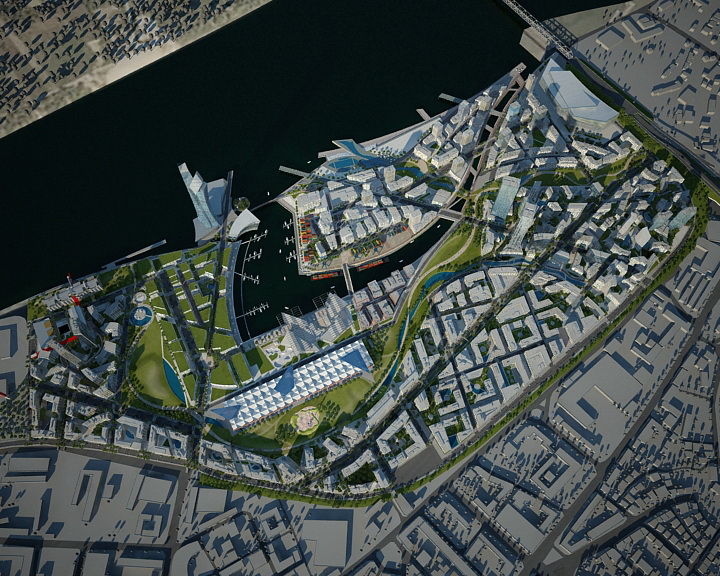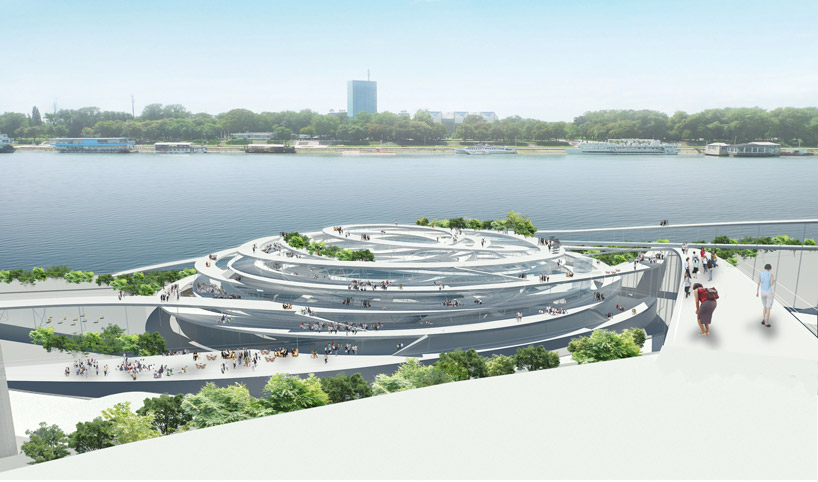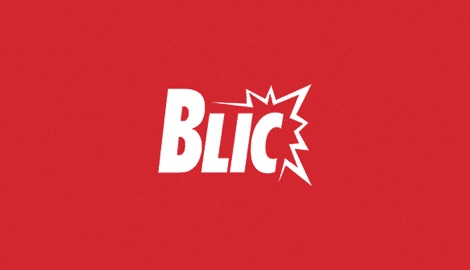proka89
FULL MEMBER

- Joined
- Jan 13, 2013
- Messages
- 1,409
- Reaction score
- 17
- Country
- Location
Al Abbar presented project “Belgrade on water” to Vucic


In the past few decades, the biggest world cities have gradually discovered the potential of their waterfronts, transforming old and dysfunctional industrial zones into quality locations with mixed uses, combining residential, commercial, cultural and sport character. Those were architectural and town planning projects which had a key role in development strategies of such cities, establishing their competitiveness in the global hierarchy and competition over investments and visitors.
Belgrade is certainly among the last few European capitals which haven’t used nor integrated great potential of its waterfront into the existing city core. Current state shows inadequate and degraded facilities, along with devastated industrial zones. The potentials of big, neglected areas remain unused without attractive points and final destinations. In cooperation with today’s leading architects, Luka Beograd company took a highly important first step in the activation of Belgrade waterfront, by developing the project “City On Water”, which would spread over 96 ha from heating plant “Dunav” in Dorćol to Pančevo Bridge. One of today’s most celebrated architects Daniel Libeskind and a renowned consulting firm for public spaces Gehl Architects, were hired in order to develop, in cooperation with Luka Beograd, the vision of new urban complex and thus revitalize the industrial area in close proximity of the city centre.

The initial vision was to activate great potential of the riverbank and to build a modern urban centre as an integral part of the city which will improve the appearance and importance of the location and the entire Belgrade.Based on the analysis of public life, the use of public space and urban matrix of Belgrade, consulting firm Gehl Architects formulated strategies and guidelines for the development of this area as framework of a detailed planning documentation and Master Plan. The basic idea of this consulting firm is that the use of public space is the essential moment for adequate life in an urban environment.
Established strategies and guidelines form a framework for the range of urban qualities of public spaces defined from the perspective of a man and his everyday activities. They should provide quality area along the riverbank, dynamic public life, social interaction and variety and diversity within new urban context which would become an integral part of the city.
Starting from the strategies and guidelines from Gehl Architects, Daniel Libeskind Studio began to realize the Master Plan which makes the structural basis of the entire complex, both its existing and potential assets.
Master plan is a sophisticated model which determines the instructions for public space planning, the way in which the streets, squares and open neighbourhoods are connected. It defines the height and dimensions of buildings, determines proposed links between buildings and open spaces and identifies pedestrian, cycling, vehicle and public transport network.

Master plan also defines the grounds for determining the most important infrastructure elements as well as functional needs and limits which stem from the location itself, thus linking physical form to social, economic and cultural environment.
Daniel Libeskind studio elaborated established criteria for the realization of urban qualities in order to activate great potential of the waterfront and transform its excellent location into Belgrade attraction and also to connect new urban development with its size and structure to the existing urban matrix, identity and dynamics of the old city core.
Integrated into the common vision, as a result of cooperation between two specific approaches of Gehl Architects and Daniel Libeskind Studio, the following elements represent a strategic basis for the development of the new urban centre:
Luka Beograd :: Master plan


Sou Fujimoto Architect have shared with us their first place proposal for the Beton Hala Waterfront Centre in Belgrade, Serbia. Contrasting the medieval fabric of the capital city, Sou Fujimoto’s “floating cloud” intertwines an array of social and transportation programs into an organized tangle of suspended ramps that emerge from the static platform of the Beton Hala. It was lauded by the jury to be a “brave proposal” that holds the “highest emblematic potential among all of Beton Hala entries”.
The new, vibrant pedestrian square will serve as the principle access point from the capital’s riverfront to it’s historic core. It will house retail space, cafes and restaurants, exterior exhibition space and a viewing platform, as it is perched atop a subterranean parking garage and transportation hub linking the ferry terminal, tram and bus.


Beton Hala Waterfront Center / Sou Fujimoto Architects | ArchDaily


The project focusses on the urban regeneration of an important site at the intersection of key cultural projects within the city of Belgrade. Following the region’s strong modernist traditions, the masterplan has applied new concepts and methods that examine and organize the programs of the site; defi ning a composition of buildings that addresses the complexity of 21st century living patterns. The design for BEKO is embedded within the surrounding landscape of Belgrade’s cultural axis and incorporates essential public spaces.
Beko Masterplan - Architecture - Zaha Hadid Architects

First Serbian Deputy Prime Minister Aleksandar Vucic has attended the presentation of the project “Belgrade on water”, done by Muhammad al Abbar, the director of the newly founded “Eagle Hills” company. The investor from the UAE is ready to put more than three billion dollars in the project. The company has started the works on the project with the support of the Serbian Government, with the goal of building a world class center in Belgrade. Vucic has pointed that the realization of the project “Belgrade on water”, along with the growth of the automotive industry and agriculture, would mean certain recuperation from the crisis for Serbia.

In the past few decades, the biggest world cities have gradually discovered the potential of their waterfronts, transforming old and dysfunctional industrial zones into quality locations with mixed uses, combining residential, commercial, cultural and sport character. Those were architectural and town planning projects which had a key role in development strategies of such cities, establishing their competitiveness in the global hierarchy and competition over investments and visitors.
Belgrade is certainly among the last few European capitals which haven’t used nor integrated great potential of its waterfront into the existing city core. Current state shows inadequate and degraded facilities, along with devastated industrial zones. The potentials of big, neglected areas remain unused without attractive points and final destinations. In cooperation with today’s leading architects, Luka Beograd company took a highly important first step in the activation of Belgrade waterfront, by developing the project “City On Water”, which would spread over 96 ha from heating plant “Dunav” in Dorćol to Pančevo Bridge. One of today’s most celebrated architects Daniel Libeskind and a renowned consulting firm for public spaces Gehl Architects, were hired in order to develop, in cooperation with Luka Beograd, the vision of new urban complex and thus revitalize the industrial area in close proximity of the city centre.

The initial vision was to activate great potential of the riverbank and to build a modern urban centre as an integral part of the city which will improve the appearance and importance of the location and the entire Belgrade.Based on the analysis of public life, the use of public space and urban matrix of Belgrade, consulting firm Gehl Architects formulated strategies and guidelines for the development of this area as framework of a detailed planning documentation and Master Plan. The basic idea of this consulting firm is that the use of public space is the essential moment for adequate life in an urban environment.
Established strategies and guidelines form a framework for the range of urban qualities of public spaces defined from the perspective of a man and his everyday activities. They should provide quality area along the riverbank, dynamic public life, social interaction and variety and diversity within new urban context which would become an integral part of the city.
Starting from the strategies and guidelines from Gehl Architects, Daniel Libeskind Studio began to realize the Master Plan which makes the structural basis of the entire complex, both its existing and potential assets.
Master plan is a sophisticated model which determines the instructions for public space planning, the way in which the streets, squares and open neighbourhoods are connected. It defines the height and dimensions of buildings, determines proposed links between buildings and open spaces and identifies pedestrian, cycling, vehicle and public transport network.

Master plan also defines the grounds for determining the most important infrastructure elements as well as functional needs and limits which stem from the location itself, thus linking physical form to social, economic and cultural environment.
Daniel Libeskind studio elaborated established criteria for the realization of urban qualities in order to activate great potential of the waterfront and transform its excellent location into Belgrade attraction and also to connect new urban development with its size and structure to the existing urban matrix, identity and dynamics of the old city core.
Integrated into the common vision, as a result of cooperation between two specific approaches of Gehl Architects and Daniel Libeskind Studio, the following elements represent a strategic basis for the development of the new urban centre:
Luka Beograd :: Master plan


Sou Fujimoto Architect have shared with us their first place proposal for the Beton Hala Waterfront Centre in Belgrade, Serbia. Contrasting the medieval fabric of the capital city, Sou Fujimoto’s “floating cloud” intertwines an array of social and transportation programs into an organized tangle of suspended ramps that emerge from the static platform of the Beton Hala. It was lauded by the jury to be a “brave proposal” that holds the “highest emblematic potential among all of Beton Hala entries”.
The new, vibrant pedestrian square will serve as the principle access point from the capital’s riverfront to it’s historic core. It will house retail space, cafes and restaurants, exterior exhibition space and a viewing platform, as it is perched atop a subterranean parking garage and transportation hub linking the ferry terminal, tram and bus.


Beton Hala Waterfront Center / Sou Fujimoto Architects | ArchDaily


The project focusses on the urban regeneration of an important site at the intersection of key cultural projects within the city of Belgrade. Following the region’s strong modernist traditions, the masterplan has applied new concepts and methods that examine and organize the programs of the site; defi ning a composition of buildings that addresses the complexity of 21st century living patterns. The design for BEKO is embedded within the surrounding landscape of Belgrade’s cultural axis and incorporates essential public spaces.
Beko Masterplan - Architecture - Zaha Hadid Architects





